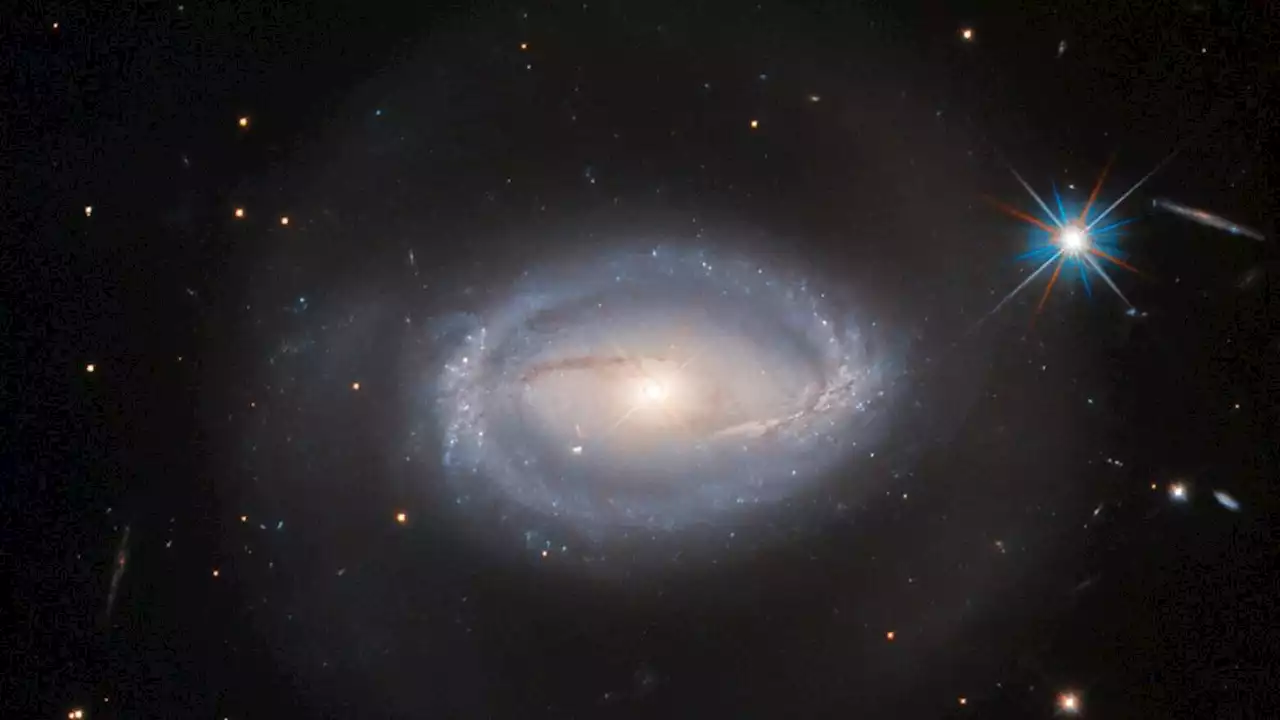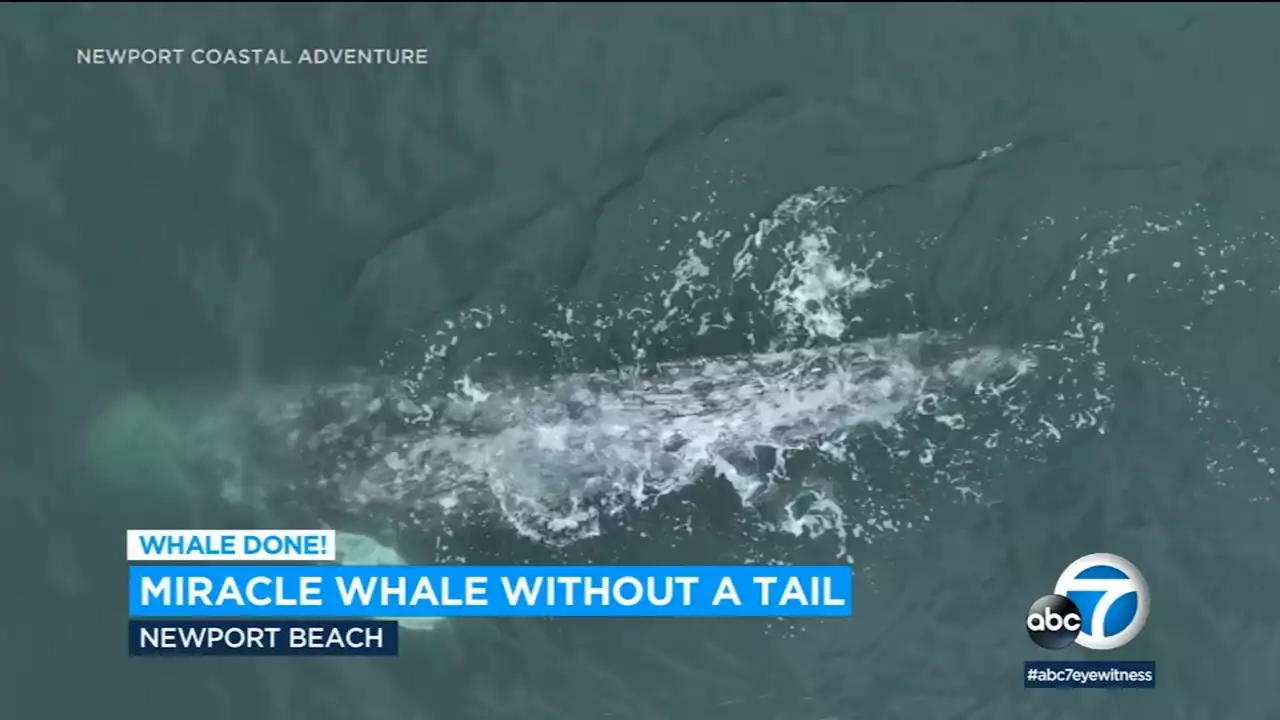An 'extremely extraordinary' gamma-ray burst hit Earth last fall, possibly the strongest ever. Hubble Space Telescope has captured the afterglow.
Hubble’s Wide Field Camera 3 captures the infrared afterglow of a gamma-ray burst nicknamed the BOAT . It is a composite consisting of two images taken a month apart last fall.
The Hubble Space Telescope has captured the afterglow of the event which researchers believe was a one-in-10,000 year event. “It is just an absolutely monstrous burst. It is extremely extraordinary; we’ve never seen anything remotely close to it,”“The BOAT is a once-in-10,000-year event. So, there’s a reasonable chance this is the brightest gamma-ray burst to hit Earth since human civilization began.
United States Latest News, United States Headlines
Similar News:You can also read news stories similar to this one that we have collected from other news sources.
 Hubble telescope captures images of Jupiter and Uranus looking different | CNNThe NASA Hubble Space Telescope allows for scientists to closely monitor the changing weather and seasons of the outer planets. Recent images of Jupiter and Uranus show each planet's atmosphere, with several differences from prior years.
Hubble telescope captures images of Jupiter and Uranus looking different | CNNThe NASA Hubble Space Telescope allows for scientists to closely monitor the changing weather and seasons of the outer planets. Recent images of Jupiter and Uranus show each planet's atmosphere, with several differences from prior years.
Read more »
 Insight-HXMT and GECAM-C observations of the brightest-of-all-time GRB 221009AGRB 221009A is the brightest gamma-ray burst ever detected since the discovery of this kind of energetic explosions. However, an accurate measurement of the prompt emission properties of this burst is very challenging due to its exceptional brightness. With joint observations of \textit{Insight}-HXMT and GECAM-C, we made an unprecedentedly accurate measurement of the emission during the first $\sim$1800 s of GRB 221009A, including its precursor, main emission (ME, which dominates the burst in flux), flaring emission and early afterglow, in the hard X-ray to soft gamma-ray band from $\sim$ 10 keV to $\sim$ 6 MeV. Based on the GECAM-C unsaturated data of the ME, we measure a record-breaking isotropic equivalent energy ($E_{\rm iso}$) of $\bf \sim 1.5 \times 10^{55}$ erg, which is about eight times the total rest-mass energy of the Sun. The early afterglow data require a significant jet break between 650 s and 1100 s, most likely at $\sim950$ s from the afterglow starting time $T_{AG}$, which corresponds to a jet opening angle of $\sim {0.7^\circ} \ (η_γn)^{1/8}$, where $n$ is the ambient medium density in units of $\rm cm^{-3}$ and $η_γ$ is the ratio between $γ$-ray energy and afterglow kinetic energy. The beaming-corrected total $γ$-ray energy $E_γ$ is $\sim 1.15 \times10^{51} \ (η_γ n)^{1/4}$ erg, which is typical for long GRBs. These results suggest that this GRB may have a special central engine, which could launch and collimate a very narrowly beamed jet with an ordinary energy budget, leading to exceptionally luminous gamma-ray radiation per unit solid angle. Alternatively, more GRBs might have such a narrow and bright beam, which are missed by an unfavorable viewing angle or have been detected without distance measurement.
Insight-HXMT and GECAM-C observations of the brightest-of-all-time GRB 221009AGRB 221009A is the brightest gamma-ray burst ever detected since the discovery of this kind of energetic explosions. However, an accurate measurement of the prompt emission properties of this burst is very challenging due to its exceptional brightness. With joint observations of \textit{Insight}-HXMT and GECAM-C, we made an unprecedentedly accurate measurement of the emission during the first $\sim$1800 s of GRB 221009A, including its precursor, main emission (ME, which dominates the burst in flux), flaring emission and early afterglow, in the hard X-ray to soft gamma-ray band from $\sim$ 10 keV to $\sim$ 6 MeV. Based on the GECAM-C unsaturated data of the ME, we measure a record-breaking isotropic equivalent energy ($E_{\rm iso}$) of $\bf \sim 1.5 \times 10^{55}$ erg, which is about eight times the total rest-mass energy of the Sun. The early afterglow data require a significant jet break between 650 s and 1100 s, most likely at $\sim950$ s from the afterglow starting time $T_{AG}$, which corresponds to a jet opening angle of $\sim {0.7^\circ} \ (η_γn)^{1/8}$, where $n$ is the ambient medium density in units of $\rm cm^{-3}$ and $η_γ$ is the ratio between $γ$-ray energy and afterglow kinetic energy. The beaming-corrected total $γ$-ray energy $E_γ$ is $\sim 1.15 \times10^{51} \ (η_γ n)^{1/4}$ erg, which is typical for long GRBs. These results suggest that this GRB may have a special central engine, which could launch and collimate a very narrowly beamed jet with an ordinary energy budget, leading to exceptionally luminous gamma-ray radiation per unit solid angle. Alternatively, more GRBs might have such a narrow and bright beam, which are missed by an unfavorable viewing angle or have been detected without distance measurement.
Read more »
 Hubble telescope spies mysterious celestial object that defies classificationClassifying Z-229-15 is complicated.
Hubble telescope spies mysterious celestial object that defies classificationClassifying Z-229-15 is complicated.
Read more »
 Stunning drone footage captures tailless 'miracle whale' swimming off Newport BeachDrone footage captured a tailless 'miracle whale' swimming off the coast of Newport Beach.
Stunning drone footage captures tailless 'miracle whale' swimming off Newport BeachDrone footage captured a tailless 'miracle whale' swimming off the coast of Newport Beach.
Read more »
 Video Captures Lighting Shooting Up From Buildings Into SkyEver seen lightning shoot upwards from a building to catch another lightning bolt mid-air? Well, if you haven't, you're in luck.
Video Captures Lighting Shooting Up From Buildings Into SkyEver seen lightning shoot upwards from a building to catch another lightning bolt mid-air? Well, if you haven't, you're in luck.
Read more »
 FLOCK SAFETY CAMERA CAPTURES STOLEN VEHICLE: Suspect arrested, facing several charges in Harris Co.One suspect is facing several charges after officials said a 'flock safety camera' captured a stolen vehicle in Harris County on Monday.
FLOCK SAFETY CAMERA CAPTURES STOLEN VEHICLE: Suspect arrested, facing several charges in Harris Co.One suspect is facing several charges after officials said a 'flock safety camera' captured a stolen vehicle in Harris County on Monday.
Read more »
